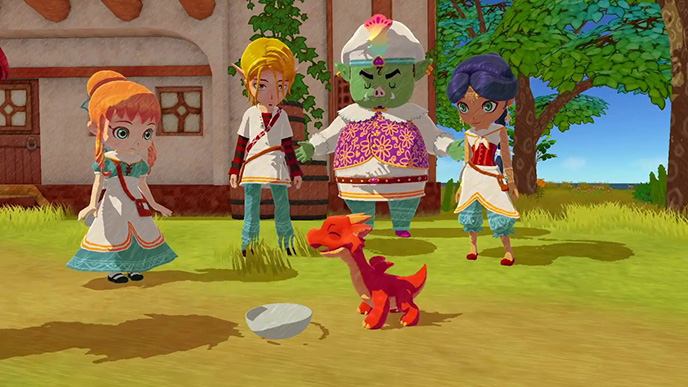
The majority of my issues with Little Dragons Café could be summed up in the same way a parent would reprimand a kid for staying out too late. I’m not mad. I’m just disappointed.
But let’s back up a bit. Little Dragons Café is the latest project worked on by Yasuhiro Wada, a major contributor to series like Harvest Moon and Rune Factory, the forerunners of the “cozy games” lineage that I particularly enjoy. It felt like all the elements were in place for me to love the crap out of Little Dragons Café. But as much as I tried to I just couldn’t find myself getting a handhold on the game in any enjoyable way.
One of the most pressing issues is what the game chooses to focus on in its design. Unlike other farming-centric titles, Little Dragons Café doesn’t care so much about the growing process of ingredients for recipes in the game’s titular café, instead focusing on various methods of foraging over farming. Your days are primarily spent scouring the land for different ingredients, or waiting for your (non-customizable) small garden to grow until it is harvestable (which will yield you a semi-random assortment of ingredients based on what you’ve already found on the island). The mechanics do not encourage or allow the player to tend to their garden or customize their space, one of the hallmarks of games like Harvest Moon or titles inspired by it like Stardew Valley.
This isn’t to say that Little Dragons Café is a bad game, it’s just not the game I was looking for. Little Dragons Café is, to distill it to its most basic elements, an exploration and foraging game wrapped around a central, very linear story that is progressed through time- and material-gated checkpoints. The elements of exploration are, too, gated mostly by your progression through the storyline, as your companion dragon will be able to take you more places when they are larger and can move items, fly, or otherwise maneuver you to more areas on the island.
But even through all this, the world feels bland, flat, unresponsive. Even the storybook art style (which I found extremely charming after it grew on me a little bit) chugs on the Switch’s hardware in wide open areas. There isn’t anything in the way of a town area, and most short dialogue sequences with interactive customers don’t go beyond them giving you an ingredient or two.
For a game with this much focus on characters, it feels odd that it doesn’t seem to want you to see their personalities outside of cutscenes. While your staff is fairly developed, your regular customers don’t get the same treatment. Occasional long-stay guests offer some short sidequest chains, but other than that the game is just a slow grind to unlock new areas to forage for more ingredients to upgrade your café’s reputation in an endless loop.
As much as I wanted to like Little Dragons Café, I found myself frustrated and stumped by it. What it does well, it does well. But the things I wanted from the game—customization, dialogue, and a sense of tangible growth from your café and the world—it simply could not provide. I’m not mad, just disappointed.
Dante Douglas is a writer, poet and game developer. You can find him on Twitter at @videodante.
